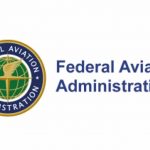Draft EASA Directive Lays Out Trent XWB Blade-Check Program
Aviation Week 12th August 2020
Europe’s Airbus A350-900 operators must conduct inspections at 2,300 flight cycles or within 50 cycles for engines that have hit the threshold for cracks in the intermediate pressure (IP) compressor blade roots, a draft EASA airworthiness directive said.
The directive, expected to be adopted by other regulators, would mandate an inspection regime developed by Rolls-Royce in recent weeks following discovery of cracks in blades on higher-time engines. Rolls issued service instructions to operators in July and early August and publicly announced the issue and the pending directive Aug. 11.
“What we’re now doing is fundamentally identifying the engines which have the problem with a repeated inspection regime, and then just changing the rotor blades, first of all to zero time rotor blades,” Rolls chief engineer for large engines Frank Haselbach said in an interview. “Eventually, we’ll have to do some modification to get rid of that problem.”
Rolls said it has found instances of cracked stage 1 rotor (R1) blades in 20% of the 100 or so higher-time engines it has inspected. Checks of newer engines have turned up no issues.
“Occurrences have been reported of finding cracked IP compressor R1 blades on certain Trent XWB engines that were close to their first planned refurbishment shop visit,” the EASA draft directive said.
EASA’s directive mandates initial inspection and follow-up checks each 200 flight cycles. The checks can be done on-wing or in a shop, Rolls said.
“Given the limited scale of additional work which we anticipate will be required at existing shop visits to address this wear, together with the availability of replacement parts and spare engines, we do not expect this issue to create significant customer disruption or material annual cost,” the company said.
The issue has not been linked to any in-service disruptions. The issue does not affect Trent XWB-97s that power A350-1000s.
EASA’s proposed directive, no. 20-120, will remain open for public comment through Sept. 9.
Link to EASA Safety Publications Tool – Draft Directive 20-120




